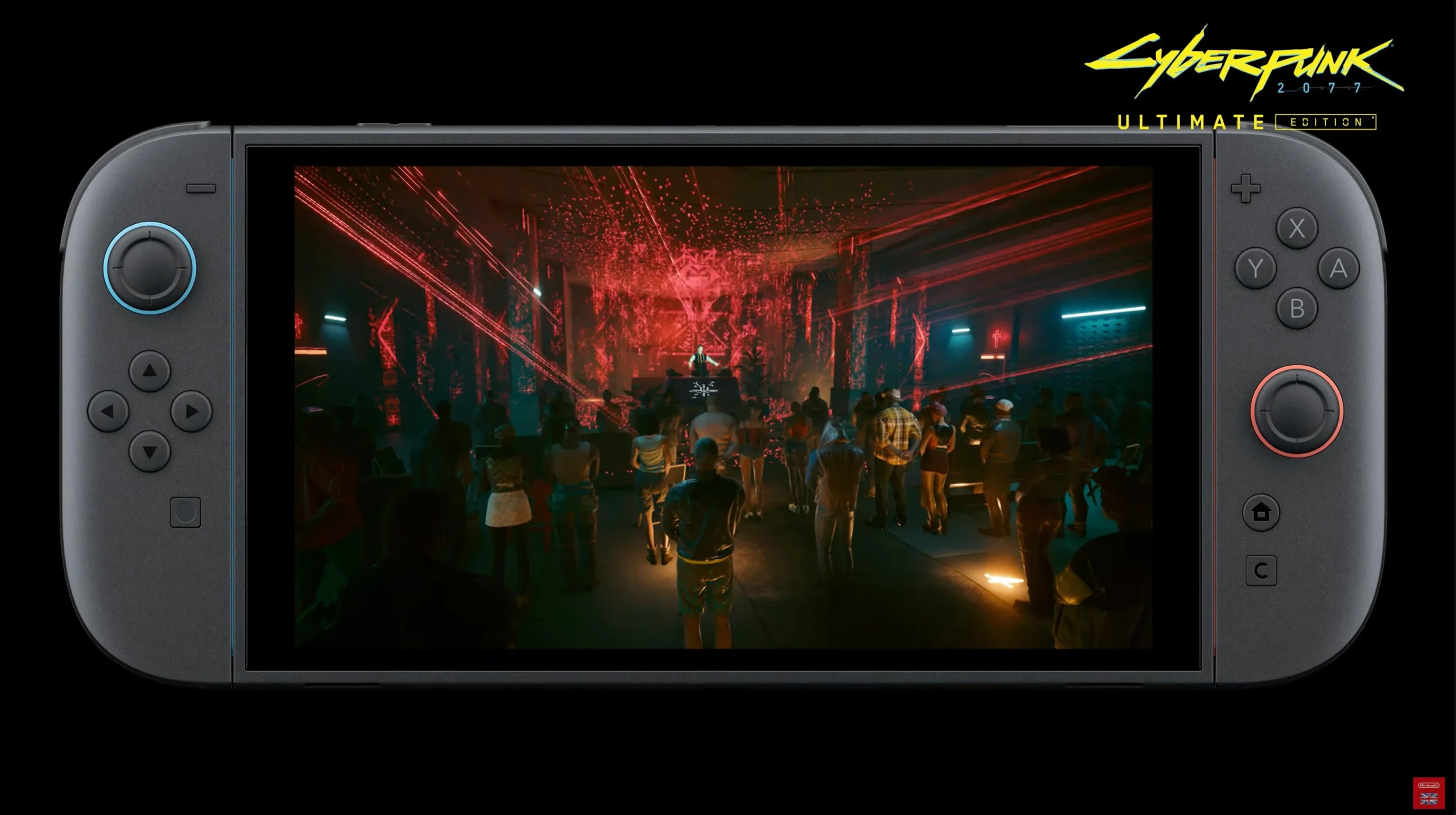Curious about Cyberpunk 2077 Switch 2 performance? We went hands-on with the game during a recent Nintendo event in London. In both docked and handheld mode, we tested frame rates, DLSS scaling, and visual compromises. Here’s our early verdict.
Docked Mode – Cyberpunk 2077 Switch 2 Performance Breakdown

🎮 Suggested Reading
In docked mode, Cyberpunk 2077 runs at 1080p in both performance and quality settings. According to a CDPR developer present at the demo, the target frame rates are 40fps (performance) and 30fps (quality) — with no native 4K, despite the Switch 2’s HDMI capabilities.
While there was no FPS counter visible, the experience felt reasonably consistent. In performance mode, we estimate framerates sat between 30–40fps during traversal, dipping slightly while driving or in dense areas. DLSS clearly helped hold the image together. Quality mode, while better looking overall, suffered from mild stuttering and jitter — with framerates estimated at 15–25fps based on motion fluidity.
While clearly not matching PC standards, the fact that Cyberpunk 2077 Switch 2 performance can deliver a stable experience at all in docked mode speaks to the system’s generational leap. DLSS is the unsung hero here.
Verdict: It’s not a PC-like experience, but it’s surprisingly playable. If you’re used to 30fps on console, docked mode delivers a version of Night City that mostly holds together.
Handheld Mode – Portable Performance Compromises
Here’s where things got interesting. In handheld performance mode, the game renders at 720p targeting 30–40fps, while quality mode shoots for 1080p at 30fps. DLSS is doing heavy lifting here — and it shows. Artifacting was visible on dynamic lighting elements, particularly car lights and signage.
In motion, especially when driving through Dog Town, the game dipped as low as 15fps by feel. Environments were sparser — fewer NPCs and vehicles — likely to keep performance viable. At rest, the game looked sharp. But at speed, detail blurred quickly, and stutter was common even in quality mode.
Verdict: Playable? Technically. Enjoyable? That depends on your tolerance for fluctuation. DLSS helps, but handheld feels like the real compromise mode here.
Technical Takeaway
This was a 7-week-old build — not final code — and CDPR devs stressed optimization is ongoing. DLSS is clearly the enabler here, but also the source of some visual hiccups. We suspect further balance will land before launch, especially around lighting flicker and dense scene loading.
Still, the fact that Cyberpunk 2077 can even boot — let alone render Night City with real fidelity — on a handheld speaks volumes about Switch 2’s potential. Between DLSS, new clock speeds, and memory architecture, we’re looking at a system that can scale big experiences down without destroying them.
🔗 Related: For more Switch 2 performance comparisons, check out our breakdown of the Metroid Prime 4 boss battle footage and how it handles action pacing across modes.
Final Thoughts
It’s easy to be cynical — “Why run this on a Switch at all?” But that misses the point. Cyberpunk 2077 Switch 2 performance may not be ideal yet, but it proves something bigger: this hardware is capable of shockingly scalable results. With more polish, Night City might feel more at home here than we ever expected.


